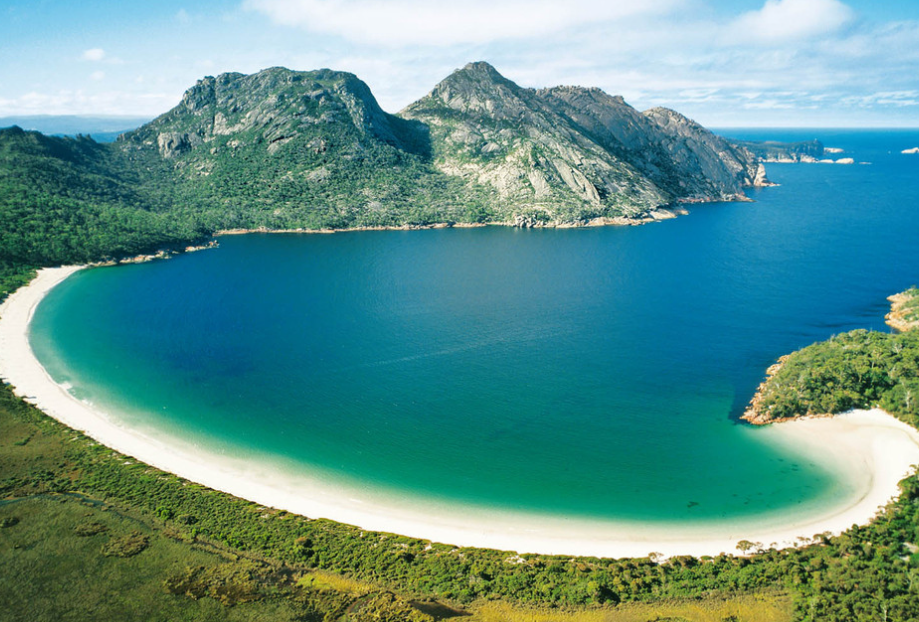
(Valley of the Kings)
It was the main mausoleum area for pharaohs and nobles during the 18th to 20th dynasties of ancient Egypt's New Dynastic period (from about 1539 to 1075 BC). Sixty-two mausoleums have been developed. Located on the west bank of the Nile, 7 km from the shore, it can be reached from the steep mountain road at the northern end of the Acropolis of Thebes.
(Suez Canal)
The Suez Canal, opened in 1869, is a sea-level waterway through the Isthmus of Suez in Egypt, connecting the Mediterranean Sea with the Red Sea, and providing the closest shipping route from Europe to the Indian Ocean and nearby lands in the Western Pacific Ocean.
It is one of the most frequently used air routes in the world, and it is also the boundary line between Asia and Africa, and the main channel for people from Asia to Africa and Europe. It runs from Port Said south to Suez, tunnelling north of Port Said into the Mediterranean Sea to the south of Suez. The completion of the Suez Canal made the Great Peninsula of Africa become the African continent, Egypt across Asia and Africa, Southwest Asia, East Africa and southern Europe more busy trade.
(Sharm el-Sheikh)
"Shalm Sheikh" or "Shalan Eshek" is a desert city located at the southern tip of the Sinai Peninsula, bordering the Gulf of Aqaba in the Red Sea, a small bay at the southeastern tip of the Egyptian Sinai Peninsula. Choke the Tiran Strait, control the Gulf of Aqaba through the Red Sea gateway, built forts and military fortresses, strategic location is important.
There are many islands and reefs in the nearby sea, and the narrowest part of the deep water channel is only 300 meters, which is a holy place to visit. It was occupied by Israel from 1967 to 1982 and returned to Egypt under the Camp David Accords in 1982. With its bright sunshine and clear water, Sharm el-Sheikh attracts a large number of European and Israeli tourists every year. The Sharm el-Sheikh area is famous for its coral reefs, which are popular with deep-sea snorkelers.
(Castle of Saladin)
Located on the eastern outskirts of Cairo, the Muqetam Hill was built by Saladin in the 12th century to fight the Crusaders. Located on the side of the main road, Saladin Castle is towering and majestic, in front of the castle is a green grass, the wall is 2 meters wide, the castle is divided into the inner city and the outer city, the palace and temple are built in the city, the top tower of Ali Mosque is like a sword soaring into the sky, and the huge dome is shining in the sun.
Many tourists come to pay their respects and pay their respects to the heroes who resisted the Crusades.
(Egyptian Museum)
It was designed and built in 1858 in Brah, north of Cairo, by the famous French archaeologist Mariette, known to Egyptians as the "father of the Egyptian Museum". The Museum is located on the east bank of the Nile River, near the Nile Hilton Hotel in Tahrir Square in Cairo, the capital of Egypt.
It is one of the world's famous museums. Officially opened to the public in 1902, it houses a large number of historical relics dating from the pharaonic period of ancient Egypt to the 6th century AD. [11] It has a collection of more than 300,000 pieces of cultural relics, with 63,000 pieces on display. About one-fifth of all cultural relics. Because the museum is mainly based on the extensive collection of pharaonic relics, Egyptians are used to calling it the "Pharaoh Museum".
(Katba Castle)
The Lighthouse of Alexandria, formerly one of the Seven Wonders of the World. In 1480, the stone was used to build a castle on the site of the lighthouse, named after King Catba.
(Sultan Hassan Mosque)
It is a famous mosque in Egypt, located at the end of Mohammed Ali Street in the southeast of Cairo, covering an area of 7906 square meters. It is full of Islamic architecture and some consider it the most beautiful mosque in the Middle East.
It is one of the representative buildings of the Mamluk Dynasty, solemn and solemn. There are two minarets in the temple, the southern tower is 85 meters high, is the largest building in Cairo, equivalent to 30 stories. It is difficult to climb the minaret, but it offers a panoramic view of Cairo, including the pyramids.
(Muhammad Ali Mosque)
The Muhammad Ali Mosque was built in 1830, 1246, in the Saladin Citadel in the old city of Cairo. The whole building has the architectural style of the Abbasid dynasty. The Muhammad Ali Mosque is located inside the Saladin Citadel in Cairo's old city.
There is a brass fence in the southwest of the temple, which is the tomb of Muhammad Ali, the governor of Egypt during the Ottoman Empire. He died in 1849 and was buried there, so the mosque was named after him. The bell of the temple's clock tower was a gift from King Louis Philippe of France.
(Al-azhar Mosque)
It is the first famous mosque in Cairo, the capital of Egypt, located in the old City. It was built between 970 and 972 during the Fatimid Dynasty and covers an area of 12,000 square meters. Originally a place of religious activity, it became an Islamic institution of higher learning in the 13th century.

